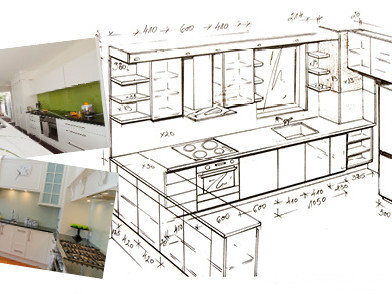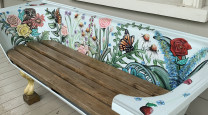
Why use a kitchen designer?
26 Nov 2014
For its size, the kitchen is one of the most complex spaces in the house to design. So a good designer is worth more than a fancy fridge any day.
Unless you can afford to eat out every night, your kitchen will be the busiest area of your home. Nowadays, it often features prominently as a part of the open-plan living area, so not only must it be a hardworking, practical, robust space that works well, but it also has to look great.
Given the kitchen’s important role, when you are building or renovating, it’s worth investing in the services of a kitchen designer to make sure you get it right. But how do you go about hiring a good one? And once you’ve made your selection, what does the process involve?
Some companies which make and supply kitchen cabinetry will offer a ‘free’ design service when you order a kitchen. But be aware that not all of the so-called designers are qualified or experienced. They may simply be sales consultants with some design flair or good knowledge of kitchen layout.
While professional kitchen designers may use preferred cabinetmakers and other suppliers, they will act independently, and design a kitchen according to your brief, not according to the limitations of the materials available.
The choosing
Do your research by looking through home design magazines and collect a scrapbook of kitchens and ideas that appeal. Conversely, also take note of things you don’t like. Visit home shows. Take note of the designers whose work you like. Ask friends who have recently built new kitchens for referrals.
Look for experienced, certified kitchen designers with National Kitchen & Bathroom Association (NKBA) qualifications. This is a four-year course that covers all aspects of kitchen design. The qualification is kept current with on-going training for a practising certificate. It ensures designers are knowledgeable about the products and up to date with design trends. If you work with an NKBA member, when disputes arise, a mediation service is provided to try to resolve issues. See www.nkba.org.nz.
Make sure the designer has been in the industry for a while, continuously. They must have current knowledge of the latest building codes, products and suppliers.
Look at examples of the designer’s work on their website, in a portfolio and magazines to see if it appeals. Speak to the designers who interest you to gauge if you think you can work with them. Ask for references from former clients and make sure you phone them. Hire someone you feel comfortable with and respect, as you’ll be spending a lot of time together over the next few months.
A kitchen may occupy a confined space but it contains so many elements and design details, that there are many opportunities for things to go wrong. Good communication is crucial, otherwise the design process can be extremely difficult.
Discuss the budget so you know what to expect. Be aware that a $15,000 and a $50,000 kitchen may look the same when first created, but several years later, the quality kitchen will still look good. You need to create a kitchen of a quality that matches the rest of your home. If your budget is tight, discuss what elements of the kitchen to spend more (and less money) on. For example, a good-quality benchtop will create visual impact and wear well so you may decide to spend more money on this and less on an ultra-fancy European tap. Also shop around for appliances and take advantage of sales or other beneficial terms.
Discuss the timeframe to ensure they can complete the project within a given time.
And the using
Talk to the designer about your lifestyle, your wants and needs. Show them the rest of your home so they are familiar with your personal style and preferences. Don’t feel intimated. Express your opinions but be prepared to listen as they have a lot of knowledge. Be trusting. Some ideas may sound off the wall, but if you’re convinced you’ve selected a good designer who knows what they’re talking about, then you can be pretty sure they’ll get it right.
Establish the ground rules right from the start. Check charges and stages of progress and what the designer expects of you to avoid any misunderstandings. Test their listening skills. Don’t just assume they’ve heard everything you have asked for. Check they understand.
Be prepared to change your mind and tastes. You’re bound to learn about things during the process that you don’t already know.
Study the plans carefully before they are finalised. Make sure the plans contain all of the information you need. And include both a plan view (looking down from above) and elevations (straight on). Make sure you are happy with every last detail – both function and form.
Don’t show the design to all your friends and family. Everyone has an opinion and if you’re swayed by those, the design will end up being compromised. Remember, it’s your kitchen, not anybody else’s.
Check that the designer has regularly used the kitchen manufacturer they recommend. Ask to go to the workshop to see that it’s tidy and well-organised. Mistakes are often made in messy environments. Check that they use good quality products, like Resene Armourcote for the cabinets. This is a super-tough epoxy paint finish.
Work as a partnership. To get the very best kitchen for you, stay involved every step of the way. This means visiting product and appliance showrooms with the designer and helping to make choices rather than leaving it all up to someone else. Having said that, you are the boss and the designer is working for you, not the other way around. Don’t abdicate responsibility.
Meet regularly to review progress and discuss any issues so there are no unexpected surprises along the way.
Published: 26 Nov 2014













 look book
look book